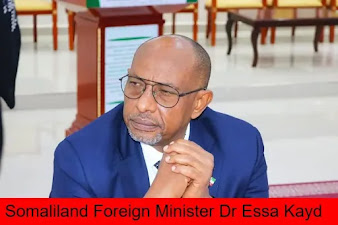History of Somaliland
After conclusion of treaties between Great Britain and the various Somaliland clans in the early 1880s, the Somaliland Protectorate was proclaimed in 1887. The international boundaries of the Protectorate were delineated by treaties with France (Djibouti) to the west in 1888, Ethiopia to the south in 1887 and Italy (Somalia) to the east in 1894.
On 26 June 1960, Somaliland became an independent, sovereign state, known as the State of Somaliland. As in all the countries which were decolonised in 1960, the State of Somaliland immediately received congratulatory telegrams from 35 countries, including all five permanent members of the UN Security Council welcoming its sovereignty. This was the practice in which recognition was extended to new decolonised states. As an independent state, the State of Somaliland entered into various treaties with the UK.
Five days after independence, on 1 July 1960, Somaliland chose to unite with Somalia with the aim of creating a “Greater Somalia” bringing together all the people of ethnic Somali origin in five countries in the Horn of Africa including Northern Kenya, Italian Somalia, French Somaliland and Eastern Ethiopia.
The agreed formalities of a treaty of union to be entered into by both Somaliland and Somalia were not completed properly. The version passed as a Law by the legislature of the State of Somaliland was not passed by the Somalia Legislature. A different single Act of Union was later passed by the National Assembly in 1961. A legal expert commented that the legal validity of the legislative instruments establishing the union were “questionable”.
The people of Somaliland had no say in the making of the constitution of the new Somali Republic. In the majority of the districts in Somaliland the referendum on the constitution held on 20 June 1961 was largely boycotted and, in sharp contrast to the Somalia regions, in the vast majority of Somaliland regions, the constitution was rejected.
The early years of the union saw the steady political and economic isolation of former Somaliland and its main towns, with political and military positions being awarded disproportionately to “southern” Somalis. The 1961 an attempted coup by a group of highly qualified Somaliland military officers was an indication of the disenchantment with the union that Somaliland had entered into.
After assuming power in a military coup in October 1969, Mohamed Siad Barre led a brutal military dictatorship, marked by widespread human right abuses. The growing discontent with and oppression by Barre’s leadership led to the formation of an opposition group, the Somali National Movement (SNM) in the North (Somaliland) in 1981.
In response to growing opposition, the Barre regime waged a targeted war on the north (Somaliland), killing an estimated 50,000 civilians and displacing an estimated 500,000 people. Northern towns such as Hargeisa and Burao were shelled and bombed. Government forces also laid over a million unmarked land mines in the north. Human Rights Watch described the Barre regime as “a government at war with its people”.
With the formation of armed opposition groups in Mogadishu and its surrounding regions in the late 1980s, the Barre regime finally collapsed and on 27 January 1991, Barre fled Mogadishu. Groups in Mogadishu initially attempted to form their own governments without any consultation and the country sank into a state of anarchy.
On 18 May 1991, the various Somaliland communities met at a Grand Conference and decided to re-assert Somaliland’s sovereignty and independence. Leaders of the SNM and elders of northern (Somaliland) clans met at the ‘Grand Conference of the Northern Peoples’ in Burao. The Union with Somalia was revoked and the territory of the State of Somaliland (based on the borders of the former British Somaliland Protectorate) became the Republic of Somaliland.
Somaliland’s withdrawal from the union and re-assertion of its sovereignty did not breach any international law and at the time the UN Security Council saw no reason to interfere. After a long period of persecution of the majority of the Somaliland population the people of Somaliland withdrew from the union their representatives had voluntarily entered in 1960.
Using indigenous peace-making procedures, the various Somaliland communities held a considerable number of local meetings and national conferences to re-establish the peace between the different communities and lay the foundations for local security and governance, in tandem with state building and national governance. It is the understanding arrived at in these meetings that have enabled Somaliland to establish peace and national governance.
The development of the Somaliland constitution started with National Charter in 1993, followed by an Interim Constitution in 1997 and culminated in the adoption of a final constitution in 2001. On 31 May 2001, 97.9% of Somaliland’s population voted in favour of the new constitution in a referendum endorsed by international observers as free and fair.
Somaliland’s constitution establishes the separation of power between the three arms of government, balances representative democracy with traditional governance institutions, ensures the existence of active opposition political parties, a free and pluralistic media and fundamental human rights and freedoms.
Nation-wide local elections took place in 2002 and in 2012. Presidential elections took place in 2003 and 2010, and parliamentary elections in 2005. International and local observers have stated that all these elections were free and on the whole fair. In both cases the losing side accepted the outcome gracefully.
Despite the lack of international recognition since 1991, in large part due to the international community’s preoccupation with establishing peace in Somalia, Somalilanders are confident that they will achieve their rightful place within the community of nations. Somaliland has not been a party to the recent changes in Somalia and has agreed to enter into discussions with the new Somalia government with a view to reaching amicable agreements on future co-operation between the two independent states and the settlement of all outstanding issues of joint concern.


Comments
Post a Comment